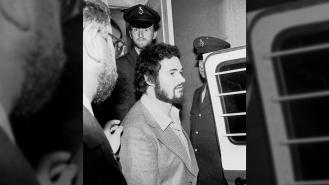
Hull: Crime Profile
Murdertown is a the true crime series which delves into the dark side of Britain's cities. Blending expert insights from police officers and reporters, along with poignant testimonies from family members, it reveals the complex context for some of the country's most notorious crimes.
Our first stop is Hull, where a young woman called Joanne Nelson vanished without a trace on Valentine's Day 2005. Reported missing by her fiancé, Joanne became the focus of a vast and increasingly worried search, and it was through a single quirk of fate that the truth finally became known. On top of that, the Joanne Nelson case also shed unexpected light on a previous crime – an unsolved murder dating right back to the 1970s. Murdertown explores how the investigation into one dark riddle helped unravel another, but what other malevolent mysteries does Hull hide?
The Lost Children of Hull
Hull, or Kingston upon Hull as it's properly known, is no stranger to sinister crimes, many dating back several generations. Hull's importance as a thriving port and fishing community, and its growing status as an industrial powerhouse in the Victorian era, caused the city's population to boom. Over the course of the 19th Century, the number of residents multiplied by a factor of 10. And with the surging numbers of people living and working here, came a surge in murders.
An ugly phenomenon also emerged during the Victorian period: the killing of children. In 1859, two different child murders were reported on exactly the same day. On 4 March of that year, the decomposing corpse of a young girl was found in the docks, while a few hours later a boy's dead body was found on the banks of an estuary. Over the following decades, a spate of similarly unsolved child murders would unfold in this booming, burgeoning city.
In 1873, an infant called Joseph Cowling was snatched from a street and was later found dead in a park, concealed by a pile of twigs. In 1888, the same year the Jack the Ripper murders commenced down in London, the body of teenager Elizabeth Oliver was found on a Hull rail embankment – she had been sexually assaulted and throttled. A few years after that came yet another unsolved child killing, when young Ada Middleton was snatched by a stranger while she was playing outside with a sibling. She was discovered with her throat slashed.
Then there were the shocking child killings that were perpetrated by the children's own parents. One of the worst was the 1873 case of Jane Crompton, a seemingly ordinary married mum who decapitated her own baby daughter. Crompton had reportedly warned her own friends that she was harbouring homicidal urges, telling one of them: "I shall do something to my baby, I cannot do anything with it."
In the chilling words of Crompton's other child, "I watched mother take a key out of her pocket and unlock dada's box. She took the knife out and cut Alice's head off." The case became a sensation across Hull, with enraged locals besieging the house and Crompton herself being attacked.
She was later incarcerated indefinitely, with experts of the time regarding it as a case of extreme "melancholia". Many such cases were reported – another example being the murder of little Joseph Hewson by his mother in 1885, for reasons that defied rational explanation.
The Crompton and Hewson killings could be seen as extreme cases of postnatal depression, in a time when ordinary working women simply couldn't get the help they needed. As for the unsolved child murders, it's perhaps inevitable that in the growing melting pot of Victorian Hull, a brave new world of commerce and congestion, acts of savagery could easily take place and go unpunished – just as the Whitechapel killings of bustling East London would also remain a maddening mystery.
The Axe Murder of Emma Starkey
Hull was also the setting for one of the most shocking murders of Victorian England: the axe murder of a young woman called Emma Starkey. It's said that the axe was so firmly embedded in Emma's head that a number of police officers were required to pull it off the corpse. A vast manhunt ensued, with one newspaper reporting the "greatest excitement and consternation throughout the whole town… Not for twenty years has such a thing been heard of in Hull as a cold blooded murder in open streets."Emma was a dressmaker who lived with her mother, and the motive for such an unprecedentedly savage slaying remained unclear. Her family, and many police officers, wondered if it had been a case of mistaken identity. The case highlighted concern about the nature of modern, urban living itself, after it became clear that Emma had been killed on a street that was almost completely bathed in shadows. As one local journalist reported, Hull was "restless" and wanted the authorities to "look at once at better lighting for the town".
Emma's murderer was never found, but her death was in some ways a wake-up call for citizens inhabiting post-industrial, newly urbanised areas like Hull. And, with the dawning of the new modern age, other cities in the UK would also full prey to such terrible crimes…






